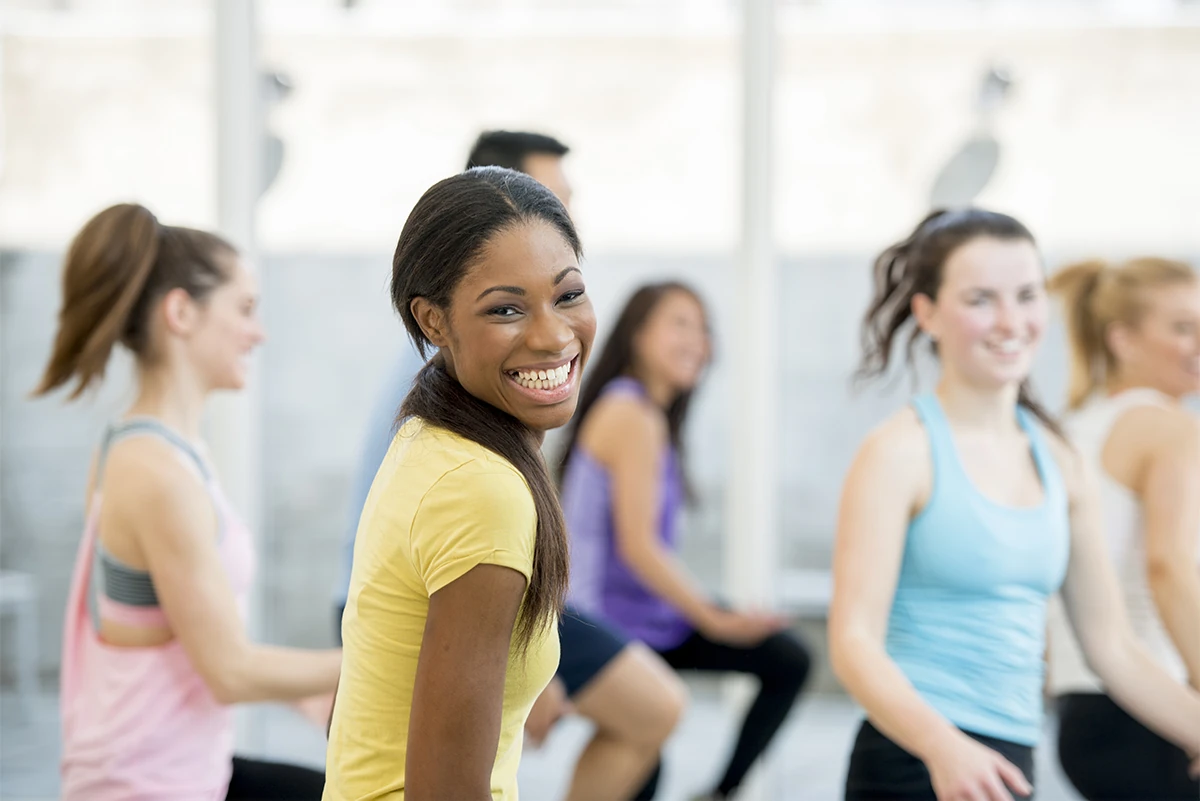Anxiety and stress can feel overwhelming, but with the right tools, they can be managed effectively. As a therapist who values the importance of addressing both the mind and body, I often recommend incorporating physical activity into daily routines as part of a holistic approach to mental health. In my experience, blending movement with mindfulness and breathwork can create a profound shift in one’s emotional state, helping to release tension and calm the mind.
Exercise has been proven to reduce the physical symptoms of stress while lifting mood through the release of endorphins, our body’s natural feel-good chemicals. This guide dives deep into the best exercises for reducing anxiety and stress and offers practical tips on how to make them a regular part of your life.
Why Exercise Reduces Anxiety and Stress
Exercise directly impacts your brain chemistry, releasing endorphins, serotonin, and dopamine—chemicals that help regulate your mood. Additionally, exercise shifts your focus from negative thoughts and worries to the present moment, offering a natural mental escape. For many people, incorporating exercise into their routine provides a sense of control over their mental well-being, which can be incredibly empowering.
Not every form of exercise affects anxiety and stress in the same way, so it’s important to choose the right one based on what resonates with you physically and emotionally. Below, we explore the best exercises for managing anxiety and stress, from cardio to mindful practices.
- What is the best exercise for managing anxiety and stress?
The best exercise varies by individual preferences, but activities like yoga, walking, and swimming are particularly effective for managing anxiety and stress. These exercises combine physical movement with mindfulness and controlled breathing, which help calm the nervous system and lower stress levels. - How often should I exercise to reduce anxiety?
Consistency is key. Aim for at least 30 minutes of moderate exercise, like walking or yoga, 3-5 times a week. This regularity helps maintain endorphin levels and keeps stress in check. - Can I start a new exercise routine if I’ve never been active before?
Absolutely! Start small, such as with 10-15 minutes of gentle walking or beginner yoga poses, and gradually increase duration and intensity as you grow more comfortable. It’s important to listen to your body and progress at your own pace.
1. Walking: Accessible and Effective
Walking is a simple yet powerful exercise for stress relief. It doesn’t require any special equipment, and even a 10-minute walk can improve mood. When you walk outdoors, particularly in nature, the benefits multiply. Walking allows for a meditative experience, especially when you pay attention to your breathing and the rhythm of your steps.
Why It Works:
- Endorphin Release: Walking triggers the release of mood-boosting endorphins.
- Mindfulness: Focusing on your surroundings, breathing, and body can help clear the mind.
- Nature’s Calming Effects: Studies show walking in green spaces can lower blood pressure and reduce anxiety.
How to Start:
Aim for 30 minutes of brisk walking five times a week, focusing on your breath and the environment to create a calming experience.
2. Yoga: Connecting Mind, Body, and Breath
Yoga is more than just a physical workout; it’s a practice that connects your body, breath, and mind. The deliberate movements combined with breath control activate your parasympathetic nervous system, promoting relaxation. In my counseling sessions, I often introduce mindfulness techniques similar to yoga, as it teaches you to stay grounded in the moment, releasing mental and physical tension.
Why It Works:
- Mindfulness and Breath Control: Focusing on the breath helps shift your body from “fight or flight” to a state of relaxation.
- Emotional Release: Certain poses, like heart-opening backbends, can help release built-up emotional stress.
- Restorative Styles: Practices like Yin yoga focus on deep stretches that allow the body and mind to fully relax.
How to Start:
Try beginner poses such as Child’s Pose, Cat-Cow, and Legs-Up-The-Wall. Incorporate deep breathing or Pranayama for maximum benefit.
3. Running: The Ultimate Stress Reliever
Running is a high-intensity cardio exercise that releases a flood of endorphins, creating what’s often called a “runner’s high.” Running allows you to disconnect from worries and focus on your breath and stride, creating a meditative state of movement. I often recommend running to clients who are dealing with high levels of stress, as it serves as both a physical and mental outlet.
Why It Works:
- Endorphin Surge: Running triggers an increase in endorphins that naturally lift your mood.
- Mindful Motion: Focusing on your stride and breath can help keep anxious thoughts at bay.
- Interval Training: Incorporating short bursts of sprinting can help regulate cortisol, the stress hormone.
How to Start:
If you’re new to running, alternate between one minute of running and two minutes of walking, gradually increasing the time as your fitness improves.
4. Strength Training: Building Inner and Outer Resilience
Strength training isn’t just for building muscle; it’s also a great way to reduce stress. Lifting weights or performing bodyweight exercises demands focus, drawing your attention away from worries. Over time, strength training also builds self-esteem and a sense of physical empowerment, which can lead to emotional resilience.
Why It Works:
- Cortisol Regulation: Lifting weights helps lower cortisol while boosting serotonin and dopamine.
- Empowerment: Feeling physically strong translates into feeling emotionally stronger and more in control.
- Routine and Focus: Following a structured workout provides consistency, which can reduce anxiety.
How to Start:
Begin with bodyweight exercises like squats, lunges, and push-ups. Gradually introduce light weights, focusing on proper form to avoid injury.
5. Swimming: A Full-Body Meditation
Swimming combines rhythmic breathing with full-body movement, making it an excellent exercise for stress relief. The sensation of being in water can have a calming, meditative effect, reducing both mental and physical tension. It’s a low-impact workout, meaning it’s gentle on your joints while still providing a full-body exercise.
Why It Works:
- Breath Control: The controlled, rhythmic breathing in swimming promotes focus and relaxation.
- Weightlessness: The water’s buoyancy reduces physical tension, contributing to relaxation.
- Low Impact: Swimming is easy on the joints, making it a great option for people with physical limitations.
How to Start:
Try swimming for 20-30 minutes, 2-3 times a week, focusing on breath and movement synchronization.
6. Tai Chi: Slow Movement, Deep Focus
Tai Chi is often referred to as “meditation in motion” and involves slow, deliberate movements paired with deep breathing. It’s an excellent exercise for grounding yourself when anxiety feels overwhelming. The practice of Tai Chi emphasizes mindfulness and body awareness, both of which promote relaxation and balance.
Why It Works:
- Mind-Body Connection: The synchronized movements and deep breathing calm the nervous system.
- Flowing Movements: The gentle, continuous motions help reduce muscle tension and mental chatter.
- Grounding: Tai Chi helps you stay present, grounding you in the moment.
How to Start:
Look for beginner Tai Chi videos or classes, and aim to practice for 10-15 minutes daily to start seeing the benefits.
7. Pilates: Strength with Mindfulness
Pilates combines core strengthening with mindful movement, making it a great option for both physical and mental stress relief. The practice requires deep concentration, drawing your focus away from anxious thoughts. Pilates also improves posture, which can help release physical tension often caused by stress.
Why It Works:
- Core Engagement: A strong core helps with both physical and mental stability.
- Mindful Movement: Pilates encourages focus on the breath and body, reducing stress.
- Posture Improvement: Better posture leads to less physical strain and tension.
How to Start:
Begin with foundational exercises like leg circles and planks. No specialized equipment is necessary; just a mat will do.
8. Bonus: Breathing Exercises – A Quick Reset
Sometimes the quickest way to reduce anxiety is by focusing on your breath. Breathing exercises can be done anytime, anywhere, and they’re a great way to calm the nervous system. Whether practiced on their own or alongside other exercises, controlled breathing offers an immediate path to relaxation.
Why It Works:
- Immediate Calm: Slow, deep breaths activate your parasympathetic nervous system, calming the body and mind.
- Accessibility: Breathing exercises can be done anywhere, making them a versatile tool for stress relief.
- Mindfulness: Breathwork promotes a mind-body connection, allowing for a deeper sense of calm.
How to Start:
Try the 4-7-8 breathing technique: inhale for 4 seconds, hold for 7, and exhale for 8. Repeat this cycle 4-5 times to reset your nervous system.
How to Choose the Best Exercise for You
Choosing the right exercise depends on your personal preferences, physical ability, and lifestyle. What matters most is that you choose something you enjoy, as this will keep you motivated and consistent. If you love being outdoors, walking or running might be ideal. If you prefer mindful movement, yoga or Tai Chi could be more beneficial.
Factors to Consider:
- Enjoyment: Choose an activity you like, whether it’s solitary or social.
- Fitness Level: Start with exercises that match your current fitness level and allow room for growth.
- Time Availability: Pick something that fits into your schedule.
- Mind-Body Connection: Exercises that combine movement and breath, such as yoga or Pilates, are great for calming anxiety.
How to Start Incorporating a New Exercise into Your Routine
Starting a new exercise doesn’t have to be overwhelming. By taking small steps, you can build consistency and gradually integrate new exercises into your life.
Tips to Start:
- Set Realistic Goals: Start with 10-15 minutes a day, then gradually increase the duration.
- Schedule It: Make exercise a non-negotiable part of your routine by scheduling it like an appointment.
- Start Small: Don’t push yourself too hard in the beginning; ease into it.
- Track Progress: Keep a log of your workouts to stay motivated and track improvements.
Tracking the Goals of Your Exercise Routine
Tracking your progress helps you stay motivated and ensures your exercise routine is benefiting your mental and physical### Tracking the Goals of Your Exercise Routine
Tracking your progress is key to staying motivated and ensuring that your exercise routine effectively reduces anxiety and stress. Set clear goals and monitor your improvements over time, focusing on both mental and physical well-being.
Key Metrics to Track:
- Mental Well-being: Keep a journal to log how you feel before and after each session. Over time, look for patterns of reduced anxiety or improved mood.
- Physical Progress: Track how your body responds—like improved strength, flexibility, or endurance.
- Consistency: Use an app or calendar to track workout frequency, aiming for regular, manageable sessions.
Review and Adjust:
After a few weeks, assess your progress. If you notice improvements in your mood or physical condition, celebrate those achievements. If not, adjust your routine, perhaps by incorporating a new type of exercise or increasing intensity. Flexibility and consistent reflection are essential to long-term success.
Finding the Right Exercise for Lasting Relief
Incorporating regular exercise into your life can be one of the most powerful tools for managing anxiety and stress. Whether it’s the meditative flow of yoga, the focused energy of running, or the mindfulness of Tai Chi, each form of exercise offers unique mental and physical health benefits. As you explore these options, keep in mind that consistency is key. By choosing activities that resonate with you and tracking your progress along the way, you can build a routine that brings both strength and calm, helping you navigate life’s challenges with resilience and confidence.
Ready to Take the Next Step?
If you’re feeling overwhelmed by anxiety and stress, our team at Talking Circles Therapy & Wellness is here to support you. We offer personalized therapy services to help you regain balance and develop effective coping strategies. Whether you’re looking for individual counseling or group therapy, we can guide you on your path to mental and emotional well-being. Contact us today to start your journey toward a calmer, healthier life!
Let’s work together to create a future of peace and resilience.
Links and Resources for the Article:
- “How Exercise Reduces Stress” – Mayo Clinic: https://www.mayoclinic.org/healthy-lifestyle/stress-management/in-depth/exercise-and-stress/art-20044469
- “The Mental Health Benefits of Exercise” – HelpGuide: https://www.helpguide.org/articles/healthy-living/the-mental-health-benefits-of-exercise.htm
- “Yoga for Anxiety and Depression” – Harvard Health Publishing: https://www.health.harvard.edu/mind-and-mood/yoga-for-anxiety-and-depression




